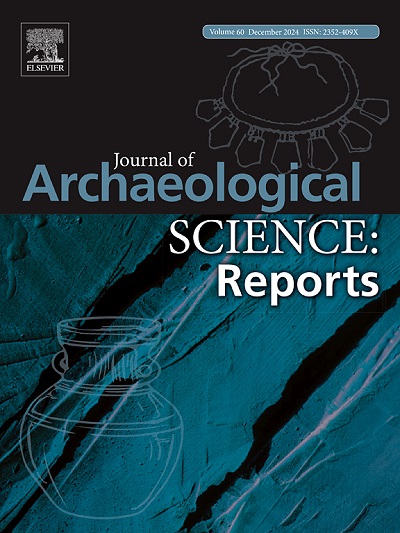The beech-fir forest, the baseline natural forest ecosystem in the montane belt of temperate Europe: questioning an ecological myth
IF 1.5
2区 历史学
0 ARCHAEOLOGY
引用次数: 0
Abstract
The present study aims to challenge and refine the existing paradigm of relict primary forests located in temperate Europe and to clarify their long-term dynamics. We focussed on the beech-fir (Fagus sylvatica L.-Abies alba Mill.) forest located in the montane belt of Romanian Carpathian Mountains and French Central Pyrenees. An hierarchical sampling strategy was employed, encompassing a multi-proxies study of two cores extracted from one peat bog (Romania) and one lake (France) in proximity to six best-preserved Old-Growth Forests (OGFs), complemented by an archaeological survey on 40 ha, the study of historical archives (16th-20th c.), the soil charcoal analysis of 16 pits, and the charcoal analysis and radiocarbon dating of former charcoal kiln platforms (n = 41). The results enabled the reconstruction of the Holocene vegetation history of these OGFs from the postglacial forest recovery and to highlight the main anthropogenic phases since c. 4000 BP. At the local scale, in the heart of the OGFs, we detected direct traces of human activities from the Bronze Age, with a sharp increase in the Modern Times, influencing forest composition and dynamics. Our results upset the paradigm of relict primary forests in temperate Europe. The montane ‘climax’ beech-fir forest used as baseline for natural forest conservation is the result of a co-construction between natural and anthropogenic processes. The biodiversity observed in contemporary OGFs can be attributed to the characteristics of maturity that have emerged in the absence of human economic activities for several decades. This underscores the necessity for biodiversity-friendly forest management strategies.
山毛榉冷杉林,温带欧洲山带的基线自然森林生态系统:质疑生态神话
本研究旨在挑战和完善欧洲温带原始森林的现有模式,并阐明其长期动态。我们重点研究了位于罗马尼亚喀尔巴阡山脉和法国比利牛斯山脉中部的山毛榉冷杉(Fagus sylvatica L.-Abies alba Mill.)森林。采用分层采样策略,包括从一个泥炭沼泽(罗马尼亚)和一个湖泊(法国)提取的两个岩芯的多代理研究,这些岩芯靠近六个保存最完好的原始森林(ogf),辅以40公顷的考古调查,历史档案研究(16 -20世纪),16个坑的土壤木炭分析,以及前木炭窑平台的木炭分析和放射性碳定年(n = 41)。研究结果有助于从冰期后森林恢复中重建这些ogf的全新世植被历史,并突出了c. 4000 BP以来的主要人为阶段。在局部尺度上,在ogf的中心,我们发现了青铜器时代人类活动的直接痕迹,近代人类活动急剧增加,影响了森林的组成和动态。我们的研究结果颠覆了欧洲温带原始森林的范式。山地“顶极”山毛榉冷杉林被用作天然林保护的基线,是自然和人为过程共同构建的结果。在当代ogf中观察到的生物多样性可归因于几十年来没有人类经济活动的情况下出现的成熟特征。这强调了制定有利于生物多样性的森林管理战略的必要性。
本文章由计算机程序翻译,如有差异,请以英文原文为准。
求助全文
约1分钟内获得全文
求助全文
来源期刊

Journal of Archaeological Science-Reports
ARCHAEOLOGY-
CiteScore
3.10
自引率
12.50%
发文量
405
期刊介绍:
Journal of Archaeological Science: Reports is aimed at archaeologists and scientists engaged with the application of scientific techniques and methodologies to all areas of archaeology. The journal focuses on the results of the application of scientific methods to archaeological problems and debates. It will provide a forum for reviews and scientific debate of issues in scientific archaeology and their impact in the wider subject. Journal of Archaeological Science: Reports will publish papers of excellent archaeological science, with regional or wider interest. This will include case studies, reviews and short papers where an established scientific technique sheds light on archaeological questions and debates.
 求助内容:
求助内容: 应助结果提醒方式:
应助结果提醒方式:


